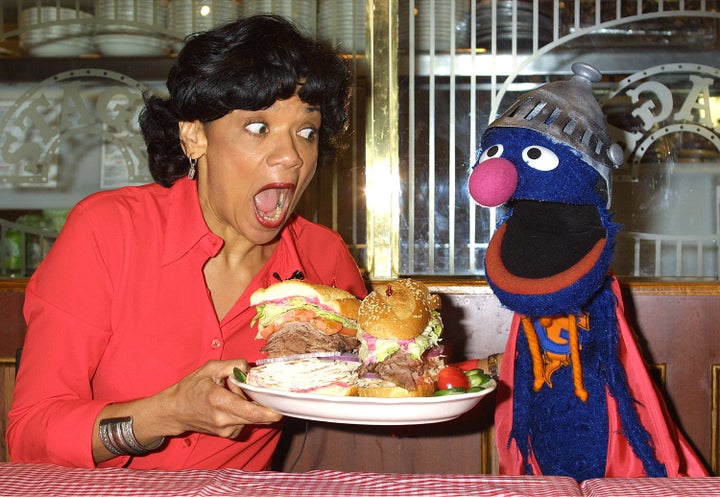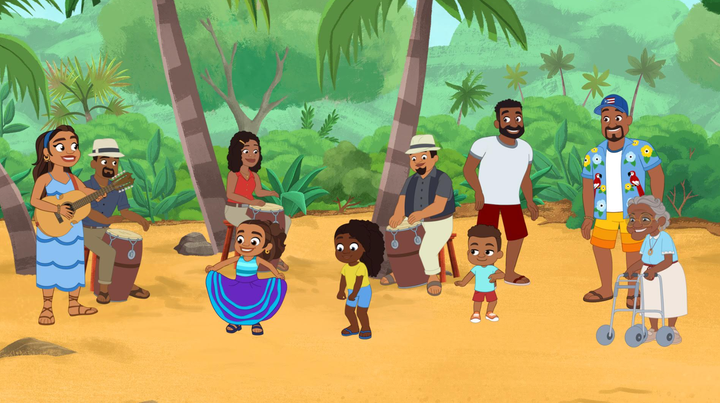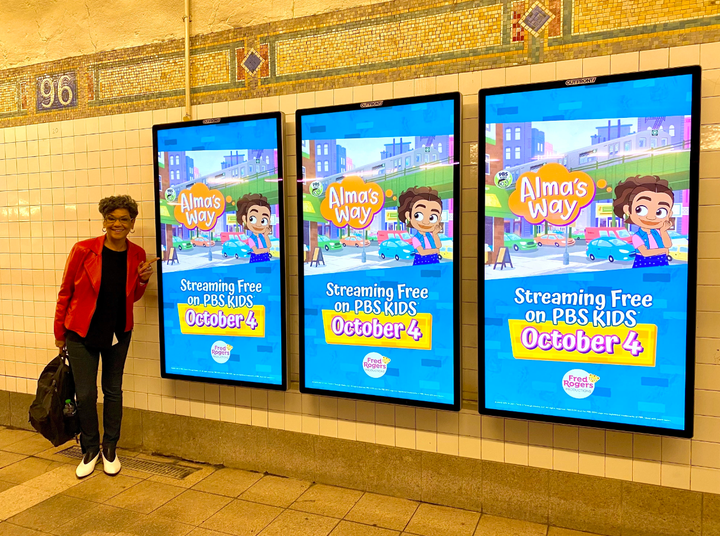
The first time I saw “Sesame Street” was at the student union of Carnegie Mellon University in Pittsburgh. It was intriguing to see James Earl Jones reciting the alphabet (“A, B, C, D ... ”) as the letters flashed over his bald head. But when I saw the characters of Susan and Gordon — a cheerful, warm, Black married couple speaking to me from an urban neighborhood — I was flabbergasted.
In 1969 you did not see many people of color on television.
Growing up in the 1950s, I marveled at television. It gave me a peek into a world very different from mine in the South Bronx. But never seeing myself or people like me reflected in the media made me feel invisible. I couldn’t help wondering what I could contribute to a society that didn’t see me.
So imagine how excited I was to be cast as Maria on “Sesame Street” in 1972. Here I was, being given the opportunity to right the wrong of being overlooked when I was a kid! How wonderful to be one of the first Latinas on national television.
But I struggled — first with my looks. I couldn’t believe I was dressed in the pleated skirts and knee socks of a Midwestern co-ed. When producer Jon Stone hauled me into the makeup room, stating, “I go through all the trouble on casting a real person and you make her look like a Kewpie doll!” I knew he agreed, and as the makeup artist scraped the makeup off my face, I felt sure the “Sesame Street” producers were sincere in wanting me to be myself. I confidently did away with the “square” outfits and the pancake makeup and let myself come through.
Second, I struggled with performing with Muppets. They were irreverent, wild and zany. I was compelled to look at puppeteer Frank Oz instead of the Grover puppet he was manipulating! Finally, Oz quipped, “Quit looking at that man down there!” in his Grover voice. I was embarrassed but began to focus on Grover’s googly eyes. In time, when I realized the Muppets were the comics and I was the straight man, I thought, I got this! and began to hold my own with them.

What was probably the most important moment was when Matt Robinson, the “Sesame Street” writer who also played Gordon, pulled me aside to say, “You weren’t hired to just be the cute little Latina, you know — you have to make sure the Hispanic content is accurate.” I was taken aback. Who elected me president of Puerto Ricans? Who thought I should represent them? I was simply an actress.
I went back to my own childhood and remembered the lack of any Latin cultural representation on television, but how could I make it happen on “Sesame Street”? I wasn’t a writer or producer, but I noticed the street’s fruit cart showcasing the usual apples and bananas. With knees knocking, I meekly suggested to the producers that if Latin people lived on Sesame Street, the cart would include foods Puerto Ricans eat — platanos and cocos and yautia. They complied.
Diversifying the fruit cart was a small thing, but it led me to understand the real power lay behind the camera. I became a writer and developed Maria into an ideal version of me. I became what I wish I had seen on television growing up.
Naturally, I thought I was just the first of many. Surely after the success of “Sesame Street” and my contribution to it, all kinds of Latinx talent would flood the media. Not so. Though there are more Latinas in children’s television than there were when I started out more than 50 years ago, there certainly aren’t as many as I would have thought — in front of or behind the camera. Why is that? Why are we allowed through the door in such a painfully slow way?
In the early days of “Sesame Street,” the public demanded diversity of Muppets. Why not have an African American character as popular as Cookie Monster? Writer Matt Robinson came up with Roosevelt Franklin, a funny little Muppet boy who was wildly popular and memorable (in fact, in a recent documentary about “Sesame Street,” the musician and entrepreneur Questlove talked about how he had related to that character as a kid). But the response from African American academics was varied. The attributes of Roosevelt Franklin as a role model came under debate. Ultimately, the responsibility of representing a whole community weighed too heavily on this 3-pound bit of felt with a Don King Afro. Sadly, Roosevelt was retired.

In retrospect, the answer might’ve been simply to create more Black characters. After all, African American culture is not monolithic. Neither is Latin culture — and that’s something we are trying to make clear in “Alma’s Way,” a show I created for PBS KIDS and developed with Fred Rogers Productions. Though the series centers on a Puerto Rican family, we celebrate many Latinx characters.
“Alma’s Way” is set in my hometown of the boogie-down Bronx. The lessons are enmeshed in the life stories of my alter ego, Alma Rivera. Alma eats mofongo (a Puerto Rican dish). She dances bomba (a traditional Puerto Rican dance). She raps and practices hip-hop moves (after all, it does take place in the Bronx). The mother is Nuyorican, like me, but the father is Afro-Puerto Rican from the island. Her little brother is named Junior (practically everybody in my neighborhood had a brother named Junior), and Alma has a zany Granny Isa (played by me — ’natch!). Alma loves her cousin Eddie Mambo, a budding composer and musician who barrels around the Bronx on braces because he has cerebral palsy (based on real people I knew). The characters of “Alma’s Way” are also generationally diverse — we even feature a middle-aged Bronx breakdancer.
But Alma also interacts with an uncle who is an actor of Cuban descent, a Dominican food truck vendor, elderly neighbors obsessed with dancing flamenco, and Mexican American neighbors from San Diego! Not only that, but all these people have different skin tones, accents, hair and body types, too.

I hope our efforts help show that Latinos are not a monolithic culture. It’s impossible to have a “one size fits all” Latinx character, and because of that, our well of stories is endless.
I believe these stories are more important than ever. As we see more and more banning of books and lesson plans that feature diverse histories, cultures, families and lives, we need to find as many ways as possible to highlight and celebrate these experiences. Perhaps a show like “Alma’s Way” can plant the seeds of tolerance in preschoolers.
This makes me especially proud of the “Alma’s Way” Puerto Rico special, which premieres on June 5 on PBS KIDS. In the episode, Alma visits Puerto Rico as a mainland Nuyorican — just as I did as a child. She even struggles with her Spanish language skills while joyfully rediscovering her roots— the way I did when I first visited.
People say “Sesame Street’s” Maria character opened the door — and I’ll take that compliment. But let’s also keep that door open so that Alma, “Alma’s Way” and others can come through. Not one kind of Latino — but all the kinds we are.
Sonia Manzano is the creator and an executive producer of “Alma’s Way” from Fred Rogers Productions on PBS KIDS. Born in the South Bronx, Manzano is a first-generation American of Puerto Rican descent who has affected the lives of millions as the actor who defined the role of Maria on “Sesame Street.” A 15-time Emmy winner for her television writing, Sonia is a gifted author and was the recipient of the 2022 PBS Beacon Award, the highest honor in public television, for her many cultural contributions, impact and leadership across public media.
Do you have a compelling personal story you’d like to see published on HuffPost? Find out what we’re looking for here and send us a pitch.
